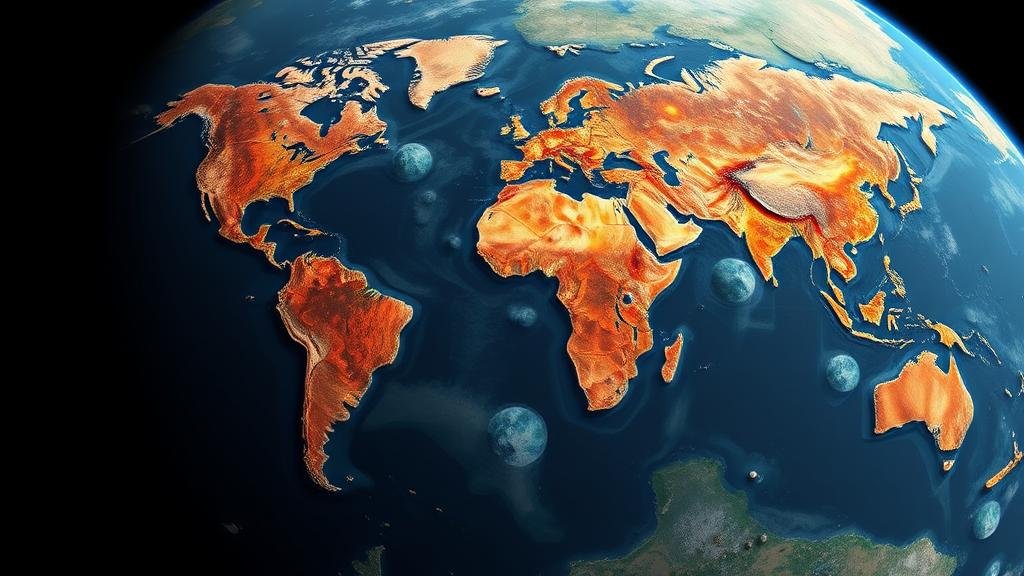How AI Analyzes Satellite Imagery for Predicting Fossil and Gem Locations
Introduction
The integration of Artificial Intelligence (AI) in analyzing satellite imagery represents a revolutionary advancement in geology and exploration for fossils and gemstones. Traditional methods of locating these resources have relied predominantly on geological surveys and physical excavation, often resulting in high costs and time inefficiencies. But, AI enhances these practices by efficiently processing vast datasets and identifying patterns that humans may overlook.
Understanding Satellite Imagery
Satellite imagery consists of pictures of Earth taken from satellites, providing rich datasets that reflect various Earth surface phenomena. e images offer multiple advantages, including a broad spatial coverage and the capability to monitor changes over time.
Modern satellites capture data in numerous wavelengths of the electromagnetic spectrum, crucial for identifying various geological features. For example, multispectral and hyperspectral imaging allows for the analysis of materials based on their spectral signatures.
The Role of AI in Image Processing
AI utilizes machine learning (ML) algorithms to analyze this complex data from satellite images. By training on pre-labeled datasets, these algorithms learn to identify geological signatures indicative of fossil and gem locations.
Specific AI methods, such as convolutional neural networks (CNNs), have shown remarkable success in image classification tasks. According to a study published in the International Journal of Remote Sensing in 2022, CNNs achieved an accuracy rate of over 90% in identifying mineral deposits from satellite images.
AI Techniques Applied to Fossil and Gem Detection
Pattern Recognition
Pattern recognition is a cornerstone of AIs capability in geological exploration. By analyzing the unique patterns and anomalies in satellite imagery, AI can identify locations where specific fossils or gems are likely to be found.
- Geological Stratigraphy: AI algorithms can analyze stratigraphic patterns in the images that indicate the potential presence of fossils. For example, layers of sedimentary rock often house significant fossil records.
- Vegetation Analysis: Certain gemstones, like emeralds, are often associated with specific vegetation types. AI can discern patterns in vegetation from satellite data, which may suggest underlying gem deposits.
Predictive Modeling
Predictive modeling in AI employs statistical techniques to forecast potential locations for fossil and gem discoveries. By integrating geological data, historical finds, and environmental factors, AI models can generate probability maps highlighting areas with the highest potential.
A notable example is the successful application of AI in the Krafla geothermal area in Iceland, where machine learning models helped identify areas with high mineral potential based on historical data from previous mining operations.
Case Studies and Real-World Applications
Case Study 1: Gemstone Exploration in Madagascar
In Madagascar, researchers utilized AI-driven satellite imagery analysis to locate sapphire deposits. The project, initiated in 2021, incorporated multispectral imaging to differentiate between bare land and areas rich in sapphire-bearing rocks. result was a substantial reduction in time and effort for the on-ground exploration phase.
Case Study 2: Fossil Mapping in the Badlands of South Dakota
Another prominent application occurred in South Dakotas Badlands, where scientists employed machine learning algorithms to assess satellite imagery for fossil locations. The models accurately predicted fossil sites, significantly guiding excavation efforts and reducing unnecessary digging in areas lacking fossil records.
Challenges and Considerations
Despite the promising capabilities of AI and satellite imagery analysis, several challenges persist:
- Data Quality: The effectiveness of AI largely depends on the quality of the training data. Inadequate or biased datasets can lead to inaccurate predictions.
- Interdisciplinary Expertise: Successful implementation requires collaboration among geologists, data scientists, and AI specialists, which may not always be feasible.
Conclusion
The application of AI in the analysis of satellite imagery for predicting fossil and gem locations not only exemplifies technological advancement but also sets a precedent for future geological explorations. As algorithms evolve and data processing capabilities improve, the potential for discovering new resources will significantly increase, leading to enhanced efficiency and cost-effectiveness in the field.
To leverage these advancements, stakeholders in the geological sector should consider investing in AI technologies and fostering interdisciplinary collaboration to maximize the potential benefits. The developments in this area present an exciting horizon for both commercial mining efforts and academic research.



